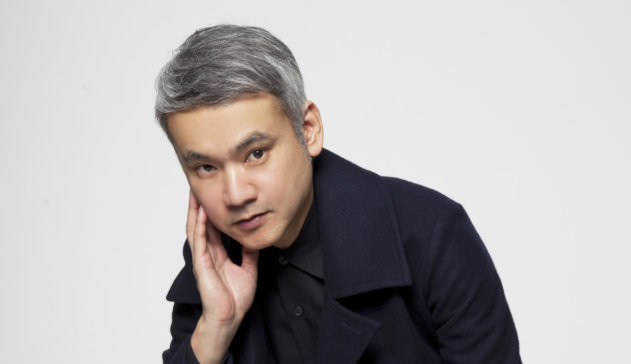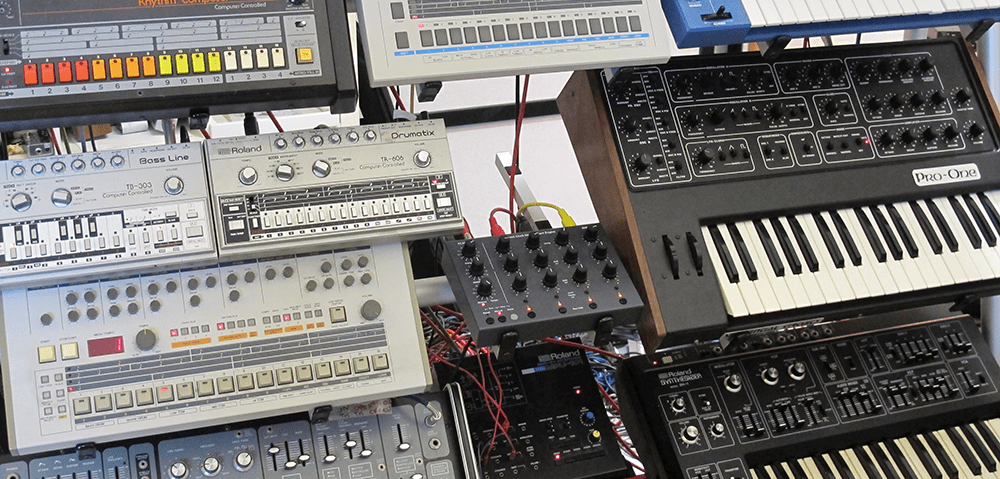Does technology define dance music? Kristan Caryl speaks to a range of producers to discover how much their tools dictate the way they make music and determine the end results.
We've tracked down seven producers who are happy to analyse and talk about the impact of technology on their music.
A common refrain among dance music fans and producers goes something like this: “I don’t care about the tools; all that matters is what comes out of the speakers.” And for all its noble intentions, that sentiment is quite frankly a little weird, because in other art forms, from painting to film, the medium and tools are often discussed at length. It would be obtuse not to take an interest in the way that the Color Field artists of the mid-20th century used newly available acrylic paints, or the way Oliver Stone chooses to use different film formats in the same movie. Those technical decisions are integral to their respective artistic expressions.
We’ve tracked down seven producers who are happy to analyse and talk about the impact of technology on their music. We ask them how their tools limits or free them, how they impact on their creative process and whether they feel defined by the kit they use. We also ponder if new technology in dance music can, or will, ever incite shock and awe in the way that 303-driven acid house did in the late 80s. Most importantly of all, we try to find out to what extent these producers really feel they can speak through their chosen machines.

SATOSHI TOMIIE
The dance music veteran who burst on to the scene with the Trax-released hit ‘Tears’ alongside the late, great Frankie Knuckles and is just about to release his latest artist album, New Day.
Yes, I think dance music is defined by technology and its limitations. Especially due to the fact that we all mostly use machines to make beats and melodies. Technology defines the end result and the limitations it presents have made the process of making music very interesting. Even drum machines were made to ‘replace’ real drum sets and drummers in the beginning, but it’s nothing like real drums back in the day. This limitation has shaped the current electronic music landscape.
Could another great misuse of equipment like the TB-303 happen again and revolutionise ideas? Possibly. I want to believe it could
Acid house was born back in the mid 80s when people were still ‘discovering’ the way to use the electronic musical instruments available to them. The Roland TB-303 was made to replace the bass player, but it sounds nothing like real electric bass. That was the limitation of the technology at the time and it made it rather interesting. You can find super realistic bass sounds on the libraries of computers today, but would you use them for something else besides the real bass? I don’t think so.
Acid groove is very common now but was really revolutionary back then. The TB-303 was not designed to be used in that way. This was excellent ‘misuse’ of the equipment. Could another great misuse of equipment like that happen again and revolutionise ideas? Possibly. I want to believe it could, but in a way we’re more ‘limited’ now than when acid house was born because there are more options and technologies available today.
I was frustrated in the past because I couldn’t realise ideas due to the limited technology available at the time, but this limitation made me who I am now. Limitation can sometimes be a positive thing for creativity, for me at least. Having ‘endless possibility’ can be good when you know exactly what you want and how to realise it, but limitations make you think harder and challenge yourself. Having the option of ‘you can do whatever you want’ sometimes leads to feelings of ‘I don’t know where to start!’
by combining old machines with modern recording technology I’ve ventured to new heights of creativity.
One of the recent additions to my studio was a Roland Jupiter-8, which has been a big inspiration for my new album. I think I used it on almost all of the tracks. This early unit has DCB
, to be driven from computer via a MIDI converter. Unfortunately, the DCB input failed almost straight after it arrived and I had to play the keyboard manually, but it gives a nice human feel to it as I played live, not sequenced or quantised. It would have been a nightmare if this happened at the time of 2-inch multi-track tape machines and samplers, but luckily we’re in the time of the DAW. It actually made me happy that I was forced to play live or to use the internal arpeggiator instead. The opening track of the album was almost accidentally born by exploring the arpeggiator on the JP-8, synced to pulse clock.
I have finally learned the best way to use a combination of software and hardware. What you can do with software is amazing – using vintage hardware is fun but it’s limited. Software offers freedom to the classic hardware equipment – they definitely compliment one another. Me and my machines are a good team – some members have been in this team for 30 years, whereas some are new and some old machines just got recruited to the team! I had stopped using old machines for a while because of the physical and functional limitations they offered but by combining them with modern recording technology I’ve ventured to new heights of creativity.

10.53 PM
Of course technology defines Dance Music. Always has, always will. It’s the medium by which we ply our craft. So many iconic machines have shaped the future of production…. MPC, 808, 909, SP1200, S950, DX7, etc, etc, ….. To me it’s kind of the reason we are in a rut. We need a technology revolution like we had in the 70’s-80’s to shake things up.
10.53 AM
a poor tradesman always blames his tools…
03.20 PM
There is no question that technology initially had a huge impact on the evolution of dance music. But it was the artists that used the technology that were responsible for the defnition..
12.48 PM
I think some Ipad music apps will bring new influence.
Korg Gadget is a multi instrument music studio with incredible sounds – compatible to Ableton.
The Korg Volca series is another small revolution. Cheap, analog, easy to use.
07.31 AM
In the early years the equipment available was limited compared to today, no MIDI for example. Today there are a hundred times more options for making music and thousands more options available in the box. If you can’t make music with all those options then the music in not in you. But wait, if you were given a 909 and a 303 and couldn’t make music with them, the music in not in you. So how cans technology define music? People define music. I saw it in Detroit every weekend.